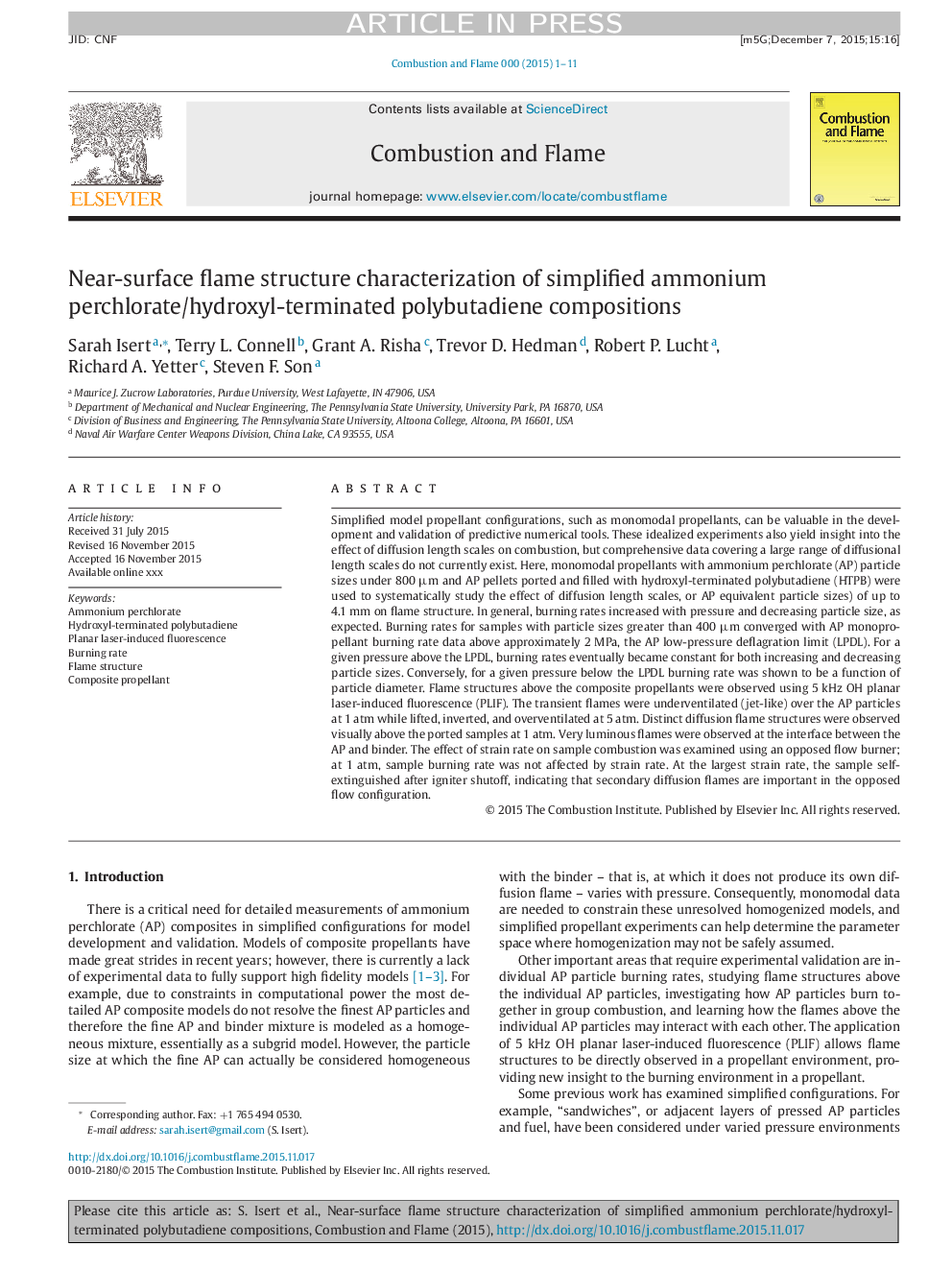| کد مقاله | کد نشریه | سال انتشار | مقاله انگلیسی | نسخه تمام متن |
|---|---|---|---|---|
| 6594295 | 458004 | 2016 | 11 صفحه PDF | دانلود رایگان |
عنوان انگلیسی مقاله ISI
Near-surface flame structure characterization of simplified ammonium perchlorate/hydroxyl-terminated polybutadiene compositions
ترجمه فارسی عنوان
خصوصیات ساختار شعله در نزدیکی سطوح ترکیبات پلی بوتادی دی اکسید کربن ساده پروکلروتر آمونیوم / هیدروکسیل
دانلود مقاله + سفارش ترجمه
دانلود مقاله ISI انگلیسی
رایگان برای ایرانیان
کلمات کلیدی
پرکلرات آمونیوم، هیدروکسیل متوقف شده پلی بوتادین، فلورسانس ناشی از لیزر فلورسانس، سرعت سوزاندن، ساختار شعله، موشک کامپوزیت،
موضوعات مرتبط
مهندسی و علوم پایه
مهندسی شیمی
مهندسی شیمی (عمومی)
چکیده انگلیسی
Simplified model propellant configurations, such as monomodal propellants, can be valuable in the development and validation of predictive numerical tools. These idealized experiments also yield insight into the effect of diffusion length scales on combustion, but comprehensive data covering a large range of diffusional length scales do not currently exist. Here, monomodal propellants with ammonium perchlorate (AP) particle sizes under 800 µm and AP pellets ported and filled with hydroxyl-terminated polybutadiene (HTPB) were used to systematically study the effect of diffusion length scales, or AP equivalent particle sizes) of up to 4.1 mm on flame structure. In general, burning rates increased with pressure and decreasing particle size, as expected. Burning rates for samples with particle sizes greater than 400 µm converged with AP monopropellant burning rate data above approximately 2 MPa, the AP low-pressure deflagration limit (LPDL). For a given pressure above the LPDL, burning rates eventually became constant for both increasing and decreasing particle sizes. Conversely, for a given pressure below the LPDL burning rate was shown to be a function of particle diameter. Flame structures above the composite propellants were observed using 5 kHz OH planar laser-induced fluorescence (PLIF). The transient flames were underventilated (jet-like) over the AP particles at 1 atm while lifted, inverted, and overventilated at 5 atm. Distinct diffusion flame structures were observed visually above the ported samples at 1 atm. Very luminous flames were observed at the interface between the AP and binder. The effect of strain rate on sample combustion was examined using an opposed flow burner; at 1 atm, sample burning rate was not affected by strain rate. At the largest strain rate, the sample self-extinguished after igniter shutoff, indicating that secondary diffusion flames are important in the opposed flow configuration.
ناشر
Database: Elsevier - ScienceDirect (ساینس دایرکت)
Journal: Combustion and Flame - Volume 164, February 2016, Pages 201-211
Journal: Combustion and Flame - Volume 164, February 2016, Pages 201-211
نویسندگان
Sarah Isert, Terry L. Connell, Grant A. Risha, Trevor D. Hedman, Robert P. Lucht, Richard A. Yetter, Steven F. Son,
